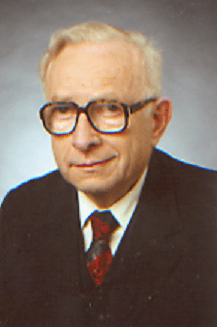Richard M. Weiner facts for kids
Quick facts for kids
Richard M. Weiner
|
|
|---|---|
 |
|
| Born | February 6, 1930 Cernăuți, Kingdom of Romania
|
| Died | August 13, 2020 (aged 90) |
| Citizenship | German |
| Alma mater | University of Bucharest |
| Scientific career | |
| Fields | Nuclear physics, Theoretical physics |
| Institutions | Institute of Physics of the Romanian Academy of Sciences CERN |
| Thesis | (1958) |
Richard M. Weiner (born February 6, 1930 – died August 13, 2020) was a smart scientist who studied theoretical physics. He was a professor at the University of Marburg in Germany. He also worked with the Laboratoire de Physique Théorique in Orsay, France.
Contents
Early Life and Escape
Richard Weiner was born in 1930 in a city called Cernăuți, which was part of Romania back then. Today, this city is known as Chernivtsi and is in Ukraine. When he was young, he went through a very difficult time as a survivor of the Chernivtsi ghetto.
He earned his PhD in Physics from the University of Bucharest in 1958. From 1951 to 1968, he worked as a research scientist in Romania. At that time, Romania was under a communist government. Richard Weiner wanted to leave the country, but the government would not let him. People who were denied permission to leave their country were sometimes called "refuseniks." He was one of the first people in Central and Eastern Europe to be called this.
In 1969, he managed to escape from communist Romania. He then joined CERN, which is a famous science lab in Switzerland. His escape and new job made big news in the media.
Scientific Discoveries
Richard Weiner made many important contributions to physics. He was known for predicting several new ideas that helped scientists understand the world better.
Understanding Tiny Particles
He predicted something called the isomeric shift. This idea helps scientists understand how tiny particles, like atoms, can change their energy levels. It has been used in many areas of physics.
He also predicted the hot spot effect in very small particles. This idea suggests that when tiny particles collide at high speeds, they can create super hot, tiny areas, like mini explosions.
Bose–Einstein Correlations
Richard Weiner also made big contributions to the theory of Bose–Einstein correlations. This is a way to study how particles behave together, especially when they are very close. It helps scientists understand how particles are created and how they move. He even wrote the only textbook specifically about Bose–Einstein correlations.
He helped start and organize a series of science meetings called LESIP. He also wrote a book about his life and science called Analogies in Physics and Life, A Scientific Autobiography.
Guiding New Scientists
Richard Weiner guided many students who were working on their PhDs. He also worked with other researchers who were just starting their careers after their PhDs.
He published more than 180 scientific papers and books. He also wrote a science-fiction novel in German called Das Miniatom-Projekt. He was often asked for interviews by newspapers and was invited to talk on the radio about his life and work.
Books for Everyone
Besides his scientific papers, Richard Weiner wrote books that were more accessible, including science fiction.
- Das Miniatom-Projekt (2006) and its English version, The Miniatom Project (2010), are science-fiction novels.
- Analogies in Physics and Life, A Scientific Autobiography (2008) is a book about his own life and how he saw connections between physics and everyday life.
- Aufstand der Denkcomputer (2014) and Rise of the Thinking Computers: A science fantasy (2016) are more science fiction stories.

